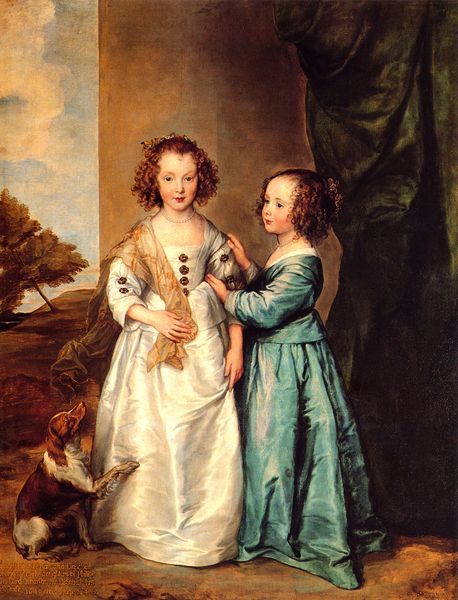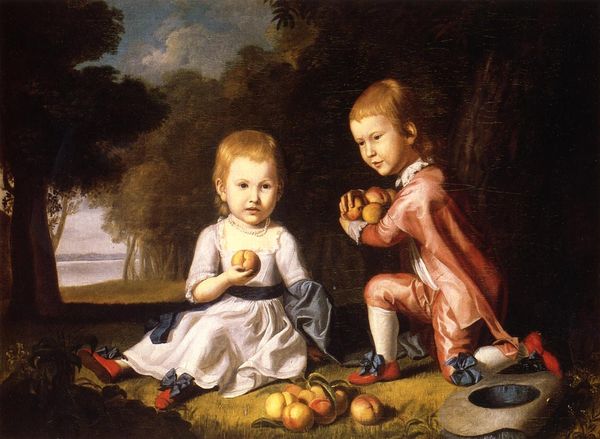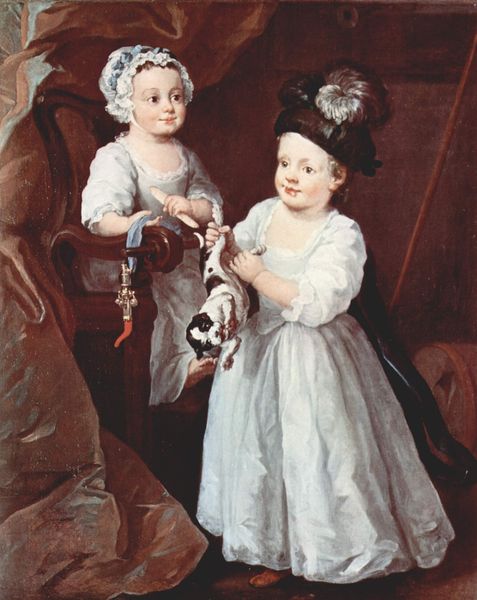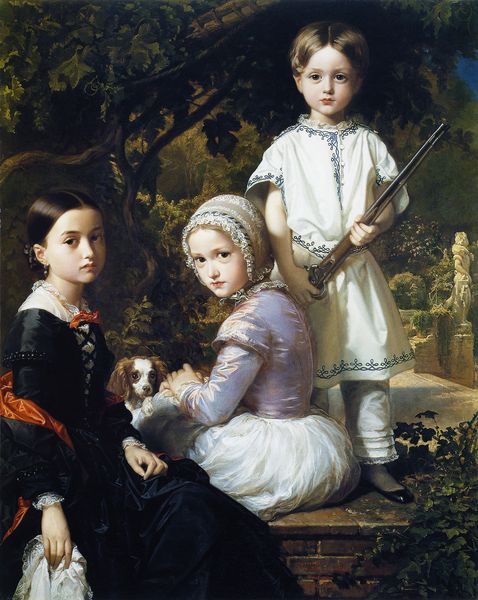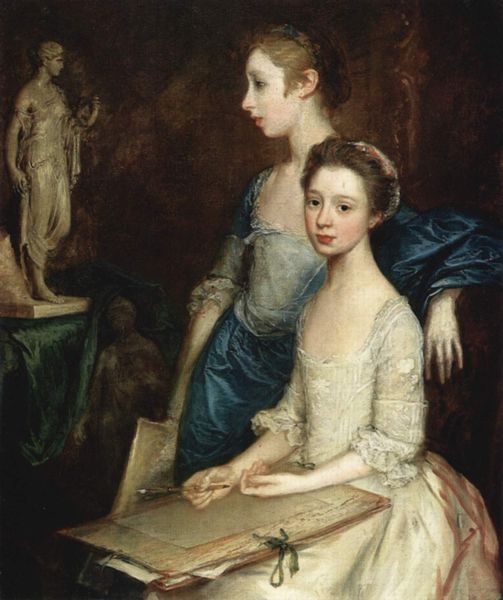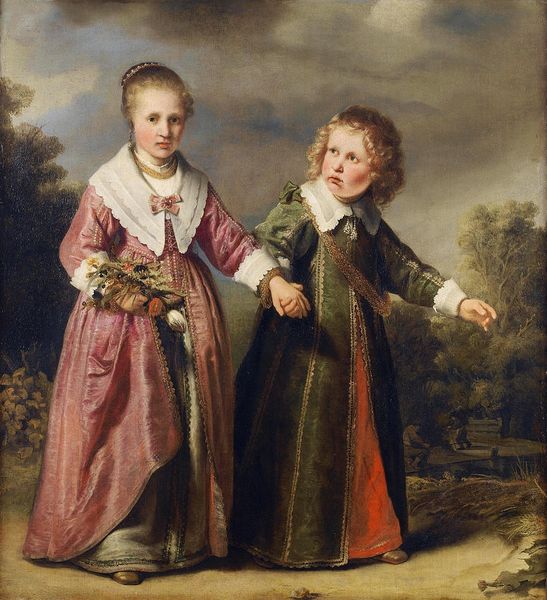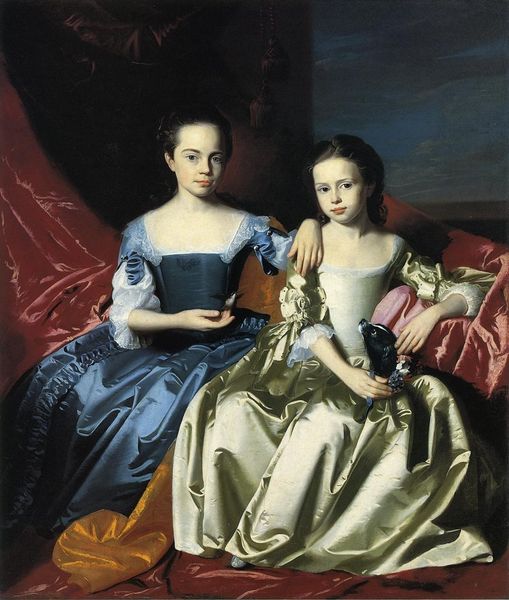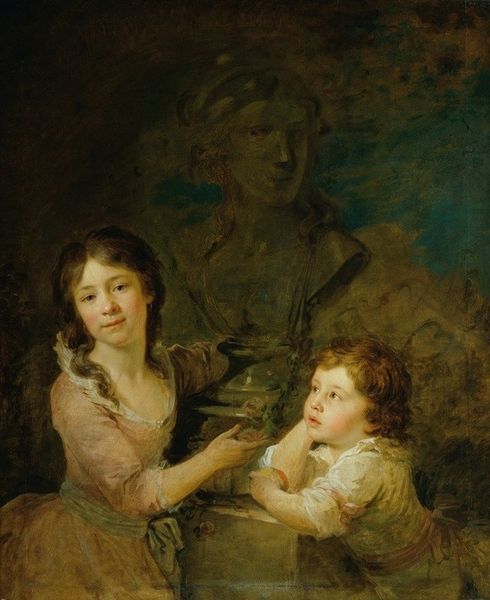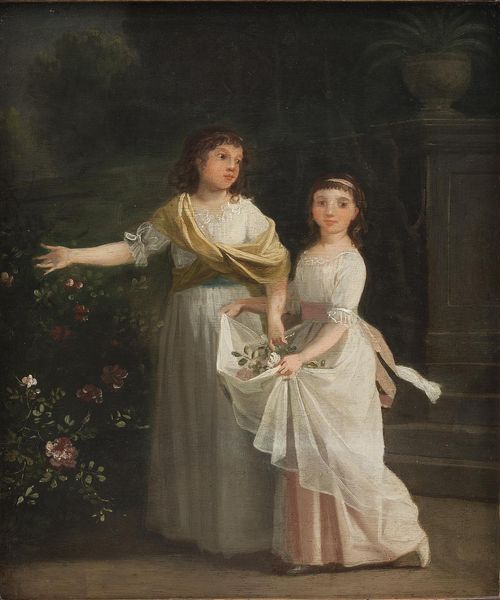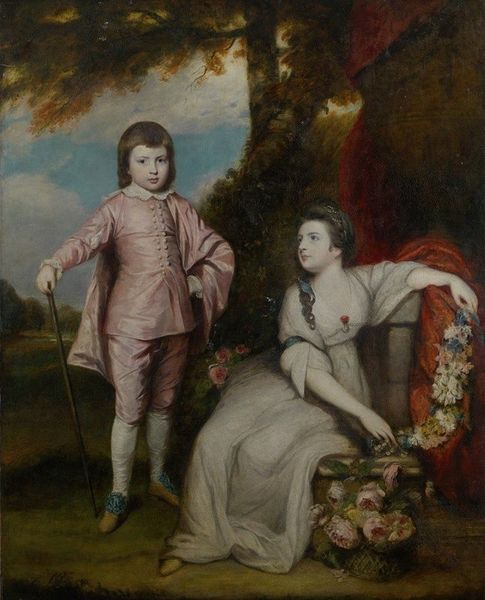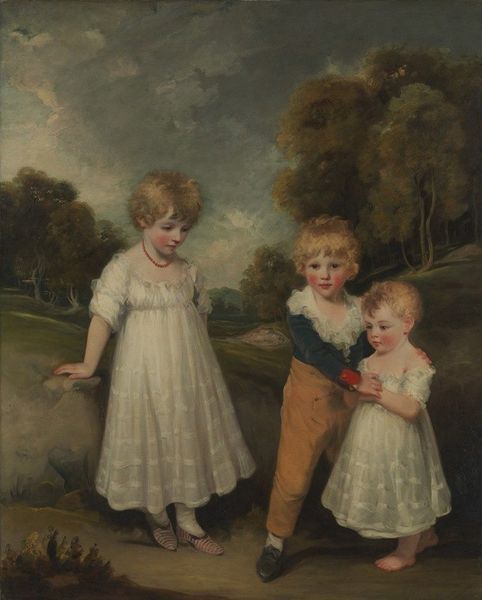
Dimensions: 104 x 113.7 cm
Copyright: Public domain
Curator: It feels like catching fireflies on a summer evening – a bittersweet joy knowing you can never truly hold onto it. Editor: Here we have Thomas Gainsborough’s “The Painter's Daughters chasing a Butterfly,” created around 1759. Currently, it resides here at the National Gallery, London. There’s such a delicate dance between the formal portraiture and the breezy spontaneity, don’t you think? Curator: Exactly! Gainsborough was portraying his daughters, yes, but he was also chasing something less tangible, a feeling, maybe? It's almost like he wanted to capture this little scene, just the barest, fleeting impression of their innocent world and hold on to it for just a moment. That butterfly represents the intangible— the beauty of ephemeral childhood experiences and maybe the pursuit of knowledge and wisdom as well. Editor: Absolutely, the painting does have echoes of a larger world where children were beginning to have an established culture, though one restricted to class, no doubt. There’s a pre-Romantic sentimentality that comes through in the image. Butterfly chasing as metaphor, then, in an increasingly stratified world? Curator: You know, the interesting part is how the background itself seems to fade almost to nothingness; there's so much emphasis placed solely on the girls, and that ethereal butterfly, just barely in focus, beckoning them deeper. He captured that feeling so well! A feeling that even as children, something they wish to understand always manages to allude them, it is constantly out of their reach. It is the struggle, beautifully put. Editor: It speaks to larger historical forces too; art shifting from commissioned portraits, usually for men in positions of power, to children—a demographic often sidelined and unacknowledged—taking centre stage. This shift invites considerations regarding emerging gender roles and class expectations during the era, complicating assumptions about British domestic life and gender relations at the time. Curator: He really transformed oil paint into pure emotion on that canvas; and there are very few pieces that speak to me like this one. Editor: Gainsborough provides more than a likeness—a dialogue opens about innocence and time. Curator: Time, how strange, how cruel, but oh so lovely! Editor: And this beautiful painting serves as a timeless conversation piece, urging dialogue and introspection through changing historical tides.
Comments
No comments
Be the first to comment and join the conversation on the ultimate creative platform.

